Gold Museum may refer to:
- Gold Museum, Bogotá, Colombia
- Gold Museum (Taiwan), Taipei, Taiwan
- Gold Museum of Peru and Weapons of the World, Lima, Peru
- Toi Gold Museum, Izu, Japan
- Pre-Columbian Gold Museum, San Jose, Costa Rica
Gold Museum may refer to:
San Salvador is the capital of El Salvador.

Taipei, officially Taipei City, is the capital and a special municipality of Taiwan. Located in Northern Taiwan, Taipei City is an enclave of the municipality of New Taipei City that sits about 25 km (16 mi) southwest of the northern port city of Keelung. Most of the city rests on the Taipei Basin, an ancient lakebed. The basin is bounded by the relatively narrow valleys of the Keelung and Xindian rivers, which join to form the Tamsui River along the city's western border.
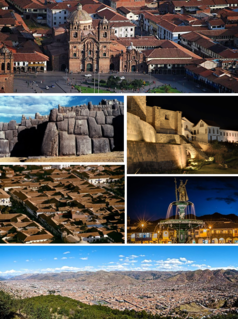
Cusco, often spelled Cuzco, is a city in southeastern Peru near the Urubamba Valley of the Andes mountain range. It is the capital of the Cusco Region and of the Cusco Province. The city is the seventh most populous in Peru and, in 2017, had a population of 428,450. Its elevation is around 3,400 m (11,200 ft).
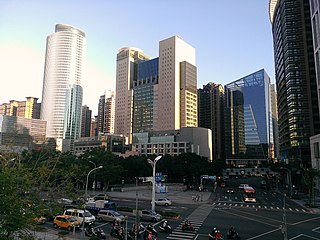
New Taipei City is a special municipality in Taiwan. Located in northern Taiwan, the city includes a substantial stretch of the island's northern coastline and surrounds the Taipei Basin, making it the second largest special municipality by area, behind Kaohsiung. New Taipei City is bordered by Keelung to the northeast, Yilan County to the southeast, and Taoyuan to the southwest. It completely surrounds Taipei. Banqiao District is its municipal seat and biggest commercial area. Until 2010, the area that roughly corresponds to the present New Taipei City was known as Taipei County.
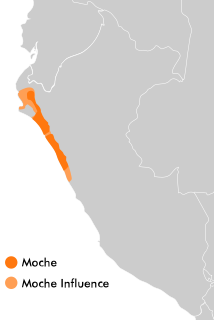
The Moche civilization flourished in northern Peru with its capital near present-day Moche, Trujillo, Peru from about 100 to 700 AD during the Regional Development Epoch. While this issue is the subject of some debate, many scholars contend that the Moche were not politically organized as a monolithic empire or state. Rather, they were likely a group of autonomous polities that shared a common culture, as seen in the rich iconography and monumental architecture that survives today.

Beitou District is the northernmost of the twelve districts of Taipei City, Taiwan. The historical spelling of the district is Peitou. The name originates from the Ketagalan word Kipatauw, meaning witch. Beitou is the most mountainous and highest of Taipei's districts, encompassing a meadow with rivers running through the valley which have abundant steam rising from them; the result of geothermal warming. The valley is often surrounded by mist shrouding the trees and grass. Beitou is famous for its hot springs. In March 2012, it was named one of the Top 10 Small Tourist Towns by the Tourism Bureau of Taiwan.
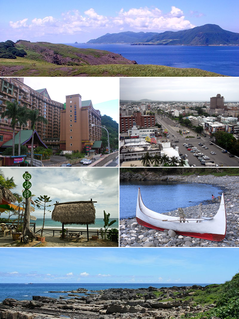
Taitung County is the third largest county in Taiwan, located primarily on the island's southeastern coast and also including Green Island, Orchid Island and Lesser Orchid Island.

Taitung City is a county-administered city and the county seat of Taitung County, Taiwan. It lies on the southeast coast of Taiwan facing the Pacific Ocean. Taitung City is the most populous subdivision of Taitung County and it is one of the major cities on the east coast of the island.
National Police may refer to the national police forces of several countries:

Chang is the pinyin romanization of the Chinese surname 常 (Cháng). It was listed 80th among the Song-era Hundred Family Surnames.

The history of Chinese currency spans more than 3000 years. Currency of some type has been used in China since the Neolithic age which can be traced back to between 3000 and 4500 years ago. Cowry shells are believed to have been the earliest form of currency used in Central China, and were used during the Neolithic period.
YMA may refer to:

Steven Shih Chen is a Taiwanese-American Internet entrepreneur who is one of the co-founders and previous chief technology officer of the video-sharing website YouTube. After having co-founded the company AVOS Systems, Inc. and built the video-sharing app MixBit, he joined Google Ventures in 2014.
Museo de Arte Precolombino (Spanish) or Pre-Columbian Art Museum (English) forms the name or part of the name of several specific institutions devoted to collections of pre-Columbian art and artefacts. As such, either of these may refer to:
Events from the year 2008 in Taiwan, Republic of China. This year is numbered Minguo 97 according to the official Republic of China calendar.

The Gold Museum of Peru and Weapons of the World is a Peruvian museum, located in Lima.
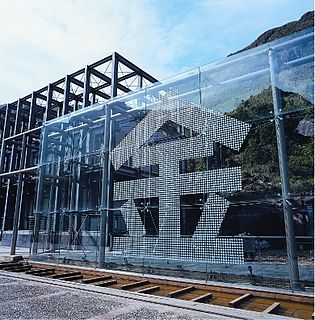
The New Taipei City Gold Museum, formerly known as the Gold Ecological Park, is a museum of the gold mining industry in Ruifang District, New Taipei, Taiwan.
Quriqucha may refer to:

Mining has been practiced in Taiwan for hundreds of years. Sulfur was an early important resource collected on the island. Coal mining expanded in the 19th century to keep up with demand from increased foreign trade. Heavy industry was further expanded under Japanese rule, but air raids towards the end of World War II decimated mining infrastructure, falling below 19th century production levels. Copper mining expanded in the mid-20th century, but ended in the 1980s following a global collapse in the price of copper.

The retreat of the Government of the Republic of China to Taiwan, also known as the Kuomintang's retreat to Taiwan, or "The Great Retreat", refers to the exodus of the remnants of the internationally recognized Kuomintang-ruled government of the Republic of China (ROC) to the island of Taiwan (Formosa) in December 1949 toward the end of active battles in the Chinese Civil War. The Kuomintang, its officers, and approximately 2 million ROC troops took part in the retreat, in addition to many civilians and refugees, fleeing the advance of the Chinese Communist People's Liberation Army.